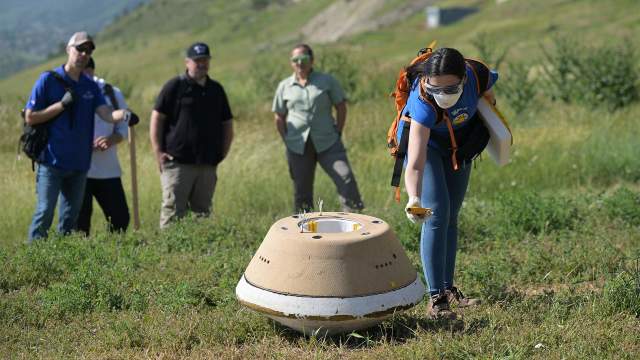How humanity uses the resources of small space bodies for the development and protection of the Earth
The delivery of soil from the asteroid Bennu to Earth can give rise to large-scale scientific research and industrial study of such cosmic bodies, scientists believe. The landing of the OSIRIS-REx spacecraft with samples will take place on September 24 at 18:00 Moscow time. Experts plan to start searching for useful resources on these extraterrestrial objects and consider the possibility of placing scientific and transport infrastructure on them. And one of the means of asteroid exploration may be the Russian promising energy transport module, which will be created in the early 2030s.
Mysterious and dangerous
On September 24, at 18:00 Moscow time, soil samples from the asteroid Bennu, collected by the OSIRIS-REx interplanetary probe, will be delivered to Earth. This is an event that planetary scientists around the world are looking forward to. It can open the way to large-scale research and industrial development of small bodies of the Solar System.
The samples will arrive on the Earth's surface in a special capsule. Its OSIRIS-REx will descend at an altitude of 102 thousand km from our planet. Then the device will go on a new expedition — to the asteroid Apophis.
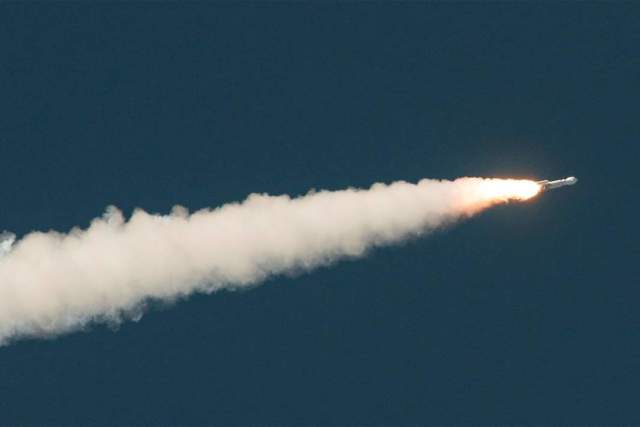
Launch of a rocket with the OSIRIS-REx spacecraft on board in September 2016
Image source: Photo: REUTERS/NASA/Joel Kowsky
The capsule will overcome the remaining way to Earth on its own. It will take four hours. At the same time, the speed of the object will be 12.4 km/sec. In the Earth's atmosphere, the lander will release a parachute and land at a landfill in the desert in Utah in the southwestern United States.
Izvestia Reference
The launch of OSIRIS-REx took place in September 2016. The probe reached Bennu in December 2018 and then studied it from orbit for 2.5 years. After that, the device made contact with the surface of the asteroid, collected soil samples and in May 2021 went back to Earth.
— If the landing is successful, the OSIRIS-REx expedition will be the third successful mission to deliver matter from asteroids to Earth. Previously, soil samples were obtained by the Japanese probe Hayabusa-1, from the asteroid Itokawa in 2010 and a decade later by its compatriot Hayabusa-2 from the asteroid Ryugu. The American expedition will bring a record amount of extraterrestrial matter — about 400 g," Nathan Eismont, a leading researcher at the Department of Space Dynamics and Mathematical Information Processing at the Space Research Institute of the Russian Academy of Sciences, told Izvestia.
He noted that Bennu belongs to the group of near-Earth asteroids. Their orbits converge or intersect with the Earth's orbit from time to time. There are about 100 thousand such objects . However, there are about 5 thousand obvious candidates for a collision with the Earth . Ryugu and Bennu— among others.
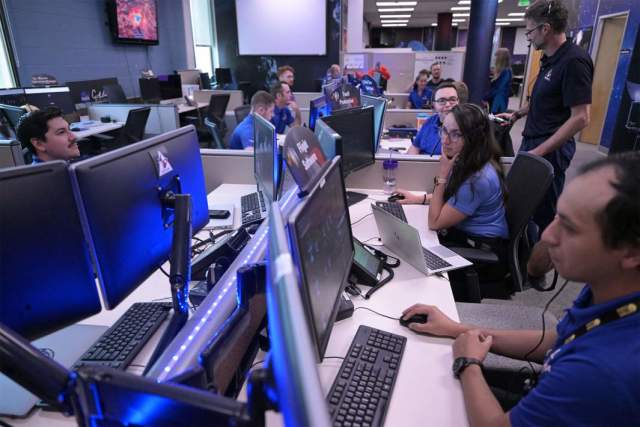
Crews observe OSIRIS-REx in the mission support area
Image Source: Photo: Getty Images/The Denver Post/Hyoung Chang
The study of ways to prevent such situations was one of the reasons for choosing Bennu as the object of the OSIRIS-REx expedition, the scientist believes.
— Modern technologies allow us to overtake small asteroids (5-10 m) into the resonant orbit of the Earth. On it, the period of their rotation will coincide with the period of the rotation of our planet in its orbit. This means that once a year they will get closer. If we have one or more "on—duty" asteroids, acting on them, we can control their flight and, if necessary, send other, larger asteroids that will threaten the Earth to intercept," explained Nathan Eismont.
He added that such operations were implemented within the framework of mathematical modeling. The main thing is that it will be necessary to detect a dangerous space object two years in advance before a possible collision.
How life appeared
At the same time, experts believe that the expedition to Bennu can give scientists important information about the evolution of the Solar system. It is assumed that this cosmic body was formed at an early stage of its formation.
Now Bennu is an uneven ball with a diameter of about 500 m. It consists of loose matter, piles of "rubble" — small and large fragments of cosmic matter. Scientists explain this structure by the fact that at some point the asteroid collided with another celestial body, collapsed and reassembled.
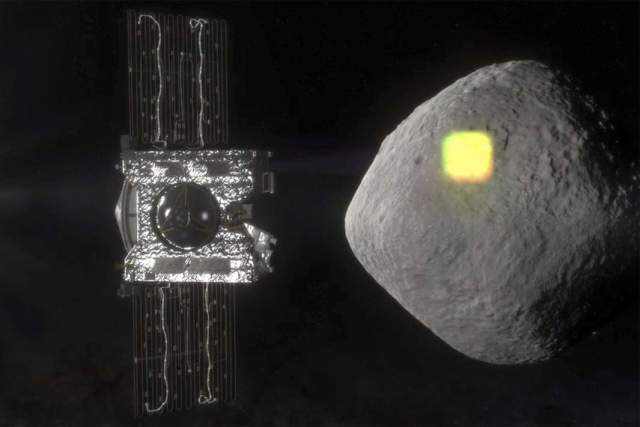
The OSIRIS-REx spacecraft mapping the asteroid Bennu
Image source: Photo: AP/NASA/Goddard/University of Arizona
Scientists suggest that water particles may be found on Bennu. This, in particular, has been repeatedly stated by the head of the OSIRIS-REx mission, Professor Dante Loretta of the University of Arizona (USA). Due to this, it is possible to assume the presence of organic matter in its rocks.
— The asteroid, in particular, is interesting because its study can shed light on the origin of life on Earth, since it is rich in organic matter. There is no evidence yet, but experts are trying to detect them and confirm or refute this hypothesis with the help of cosmic matter, — said Marina Ivanova, senior researcher at the Meteoritics Laboratory of the Vernadsky Institute of Geochemistry and Analytical Chemistry of the Russian Academy of Sciences.
Another important goal of Bennu researchers, according to the scientist, is to determine the pre-solar history of the substance from which the asteroid was formed.
Nuclear Tug
In general, there are many possibilities for using asteroids of the future, Marina Ivanova believes. Including the extraction of minerals on them, the placement of scientific equipment and transport infrastructure for promising spacecraft. This may also apply to Bennu. However, a detailed study of its surface and regolith properties (layer thickness, friability, craters) is necessary.
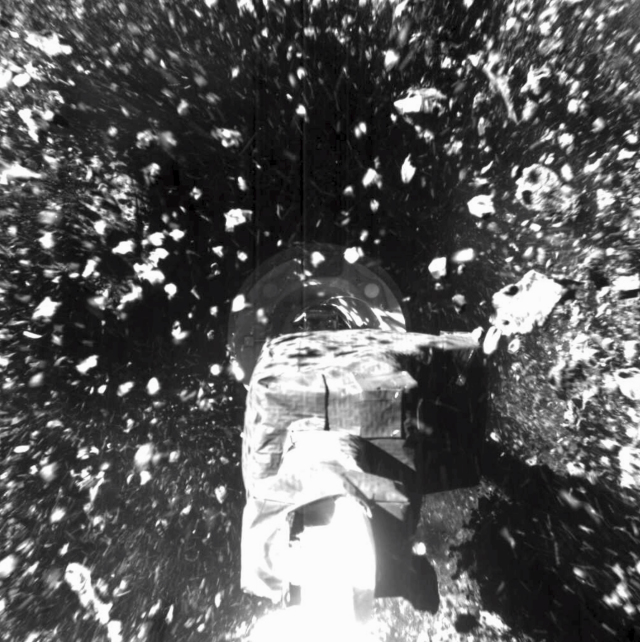
OSIRIS-REx takes a sample of the surface of the asteroid Bennu
Image source: Photo: AP/NASA/Goddard/University of Arizona
— Let the soil from Bennu be only a few hundred grams, but its study can show what resources can be brought from asteroids. In particular, a number of theories suggest the presence of asteroids that are extremely rich in rare earth and noble metals. For example, gold and platinum," Dmitry Klyucharev, a geologist and specialist in rare earth elements, commented to Izvestia.
If these theories are confirmed, then the useful resources available to asteroids will exceed the Earth's reserves by thousands of times. Although the presence of rare-metal dust in the surface samples of one asteroid can hardly serve as a refutation or confirmation of any of the theories, the expert concluded.
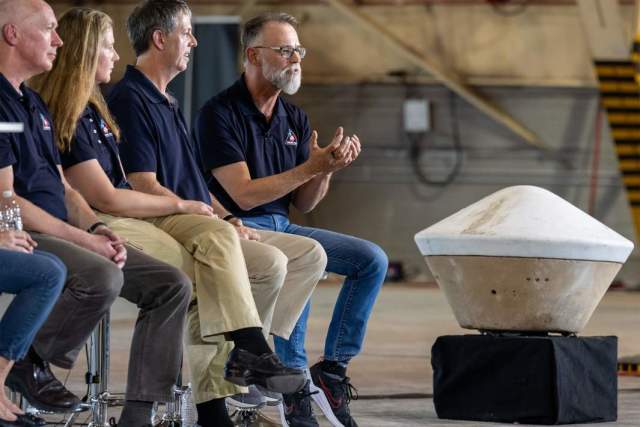
Chief researcher of OSIRIS-REx from the University of Arizona Dante Lauretta (right) answers questions from journalists during a press conference on the return of samples taken by the spacecraft. The photo on the right shows a training model of a capsule for returning samples
Image Source: Photo: Global Look Press/NASA/Keegan Barber
— Asteroids can provide humanity with a wider range of possibilities than the Moon. Because there are more of them, they are more diverse and some of them are more accessible to terrestrial vehicles than the satellite of our planet. Therefore, the main result of the OSIRIS-REx mission is to draw attention to asteroids," Nathan Eismont expressed his point of view.
As for Russian programs in this direction, according to the scientist, it is worth noting the work on the creation of a promising transport and energy module, also known as the Zeus space tug. According to open sources, it is planned to be created in the early 2030s.
It is assumed that the device will be equipped with a nuclear reactor with a capacity of about 500 kW, which will allow it to solve problems in deep space. Asteroid exploration is an area that is optimally suited for this complex.
Andrey Korshunov
